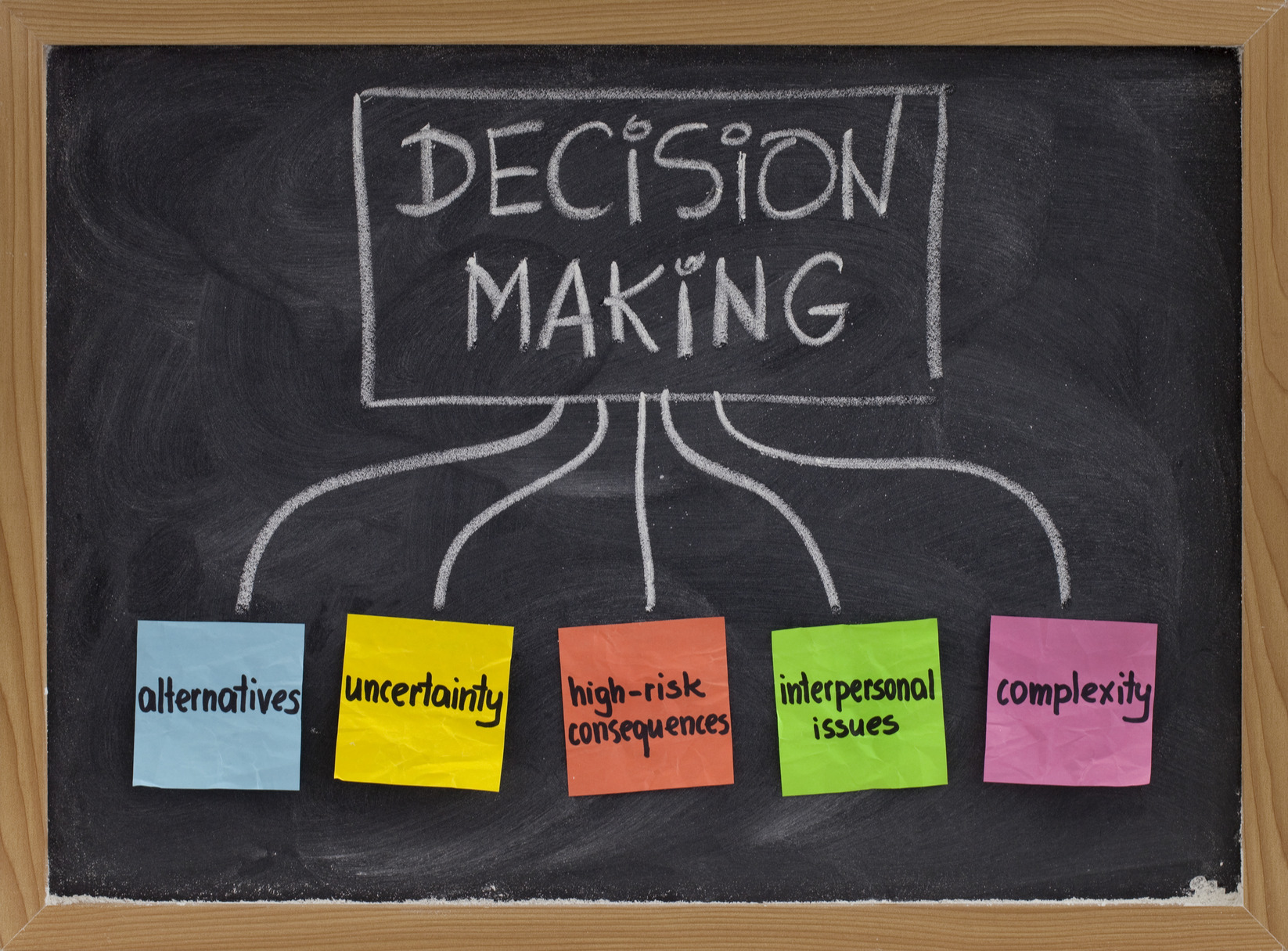 Decision Making types. Which one are you?
Decision Making types. Which one are you?
You know you need great ideas, a critical mass of talent, and a decent amount of luck to build a successful business. But there’s something even more fundamental to putting together a smart organization.
Before everything else, you, the founder, need an honest understanding of your strengths and weaknesses. Without it, you won’t know how to build a great supporting team. One place to start is to look at how you make decisions.
A new survey of about 5,000 McKinsey Quarterly and Harvard Business Review readers might offer some insight. After in-depth work on 1,021 of the responses, study authors Dan Lovallo and Olivier Sibony identified five decision-making styles. They are: Visionary, Guardian, Motivator, Flexible, and Catalyst.
Each style is a combination of preferences from a set of six pairs of opposing characteristics:
- prefers ad hoc or process
- prefers action or caution
- gathers information narrowly or widely
- believes corporate interests or personal interests prevail
- likes continuity or change
- prefers storytelling or facts
Although the authors stress that the research is still in an early stage, here is a summary of what they have learned so far.
Decision makers all have particular ways they like to work and there are actions each should take to keep their tendencies from undermining their intent.
Visionary
The visionary decision maker is “a champion of radical change with a natural gift for leading people through turbulent times.” Such people like change, gather information relatively narrowly, and are strongly biased toward action but “may be too quick to rush in the wrong direction.”
If you are a visionary leader, you should seek the opinions and views of a broad group and “encourage dissenters to voice their concerns.” Only that way can you get a wider set of views and information that can be critical to success.
Guardian
A guardian is a “model of fairness who preserves the health, balance, and values of the organization.” Such people have sound decision-making processes, try for fact-based choices, and plan carefully. They like continuity, are moderately cautious, and gather information relatively widely.
Those are fine characteristics for normal times. But the guardian can be too cautious and slow moving during a crisis, when there is “desperate need for change.” That is why a guardian should talk to people outside the organization and have them “challenge deeply held beliefs about the company and its industry.” Task forces are then in order to “explore major changes in the environment.”
Motivator
Motivators are good choices for change. They are charismatic, can convince people of the need for action, and build alignment among parts of the company. But like all good storytellers, they risk believing the story in the face of countervailing facts. They gather information relatively narrowly, and strongly believe that self-interest prevails over corporate interest.
Rather than looking simply for outside counsel, motivators need to explore the existing facts and see if there are other ways to interpret them–ways that do not necessarily play into the narrative they have created. Formal processes are a help. Motivators can use surveys to get a realistic sense of the rest of the company.
Flexible
Flexible leaders are, as you might expect from the name, more versatile than other types of leaders: “comfortable with uncertainty, open minded in adapting to circumstances, and willing to involve a variety of people in the decision making.” They mildly lean to ad hoc approaches rather than formal processes and are fairly cautious.
The problem with flexible leaders is that they can become too open-minded. Looking at all the potential issues, solutions, and outcomes can paralyze the decision-making process. They should set deadlines for decisions before the paralytic debate can commence. It can also make sense to create a framework for ordinary repetitive decisions, making them the subject of a set of rules so as not to waste time on reconsidering.
Catalyst
The catalyst is an excellent person to lead the work of groups, whether making decisions or implementing them. They are balanced, being in the middle on four out of the six characteristics, although they slightly prefer action to caution and are slightly biased toward broadly, rather than narrowly, gathering information. The more extreme the necessary decision, the more they can naturally resist inherent biases.
That said, being middle of the road can yield only average results. To avoid that, a catalyst should watch for circumstances that require high-stakes decisions and realize that they may need a different type of decision process, like having a team look at the situation and suggest potential approaches.
How does this research square with your assumptions and decision-making tendencies?
Read More
 Blog EBE English Book Education
Blog EBE English Book Education



